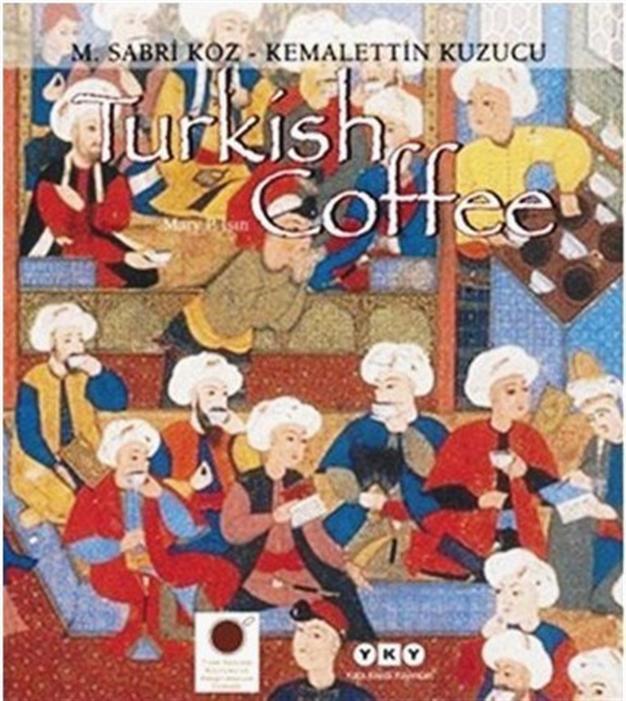A history of Turkish coffee
William Armstrong - william.armstrong@hdn.com.tr
 ‘Turkish Coffee’ by M. Sabri Koz & Kemalettin Kuzucu (trans. Mary P. Işın) (Yapı Kredi Yayınları, 2013, pp 271)
‘Turkish Coffee’ by M. Sabri Koz & Kemalettin Kuzucu (trans. Mary P. Işın) (Yapı Kredi Yayınları, 2013, pp 271)Although coffee was first consumed in East Africa, a truly distinctive coffee culture first evolved during the 16th century in the Ottoman Empire, from where it was introduced into Europe. Dutifully enough, this modest overview of the history of Turkish coffee relates the well known (and surely apocryphal) story of the Ottomans’ failed siege of Vienna in 1683, when its defeated army left behind a cache of coffee outside the city walls after retreating. The bounty was seized and taken into the city by the Austrians, which led to the first coffee houses being opened there and the start of a famous Vienna tradition. The turning point of Turkish expansion in Europe, we are therefore told, “simultaneously marks the beginning of coffee’s conquest of Europe.” This process is described by the authors as “possibly the foremost contribution of Turkish to European culture,” which is a surprisingly bold statement for an otherwise unpretentious little book. Mostly, the authors avoid such claims - settling instead for a steady procession of chin-stroking trivia.
As an undergraduate student, I once wrote an appetizing essay on the development of coffee houses in 17th century London and their contribution to the nascent English public sphere. In fact, reading this book I came to realize the considerable similarities between the English and Ottoman coffee houses that were concurrently emerging. Like those in England, Turkish coffee houses catered to a disparate clientele and had a diverse range of functions. Many were pleasure centers, where the focus was on music and dancing; others catered for specific trade, religious, or regional groups; others had more lofty, intellectual concerns. Strangely enough, today’s rough and ready “kıraathanes” originated in the 19th century as high brow establishments, attracting members of artistic and literary circles who tended to prefer reading and conversation to the more traditional coffee house entertainments.
Also like their English counterparts, Turkish coffee houses functioned as democratic public areas where news could be freely distributed and where new ideas could be argued over. It was for this reason that a keen official watch was always kept over them. As in London, Turkish coffee houses were often considered by the authorities to be dens of iniquity, (or, less explicitly stated, challenges to dominant hierarchies), which led to numerous official condemnations and bans. In both England and the Ottoman Empire, religious reasons were used to suppress the drinking of coffee, and – in both places - that religious justification almost always had political motivation. Rather unlike 17th century England, however, coffee house condemnation in the Ottoman Empire generally came in the form of a fatwa from a local imam.
Some thought the comparison could be stretched too far. Ebüzziya Tevfik, writing at the turn of the 20th century, certainly didn’t see Turkish coffee houses as democratic public spaces to be welcomed, as in 17th century England, suggesting: “While English coffee houses had been meeting places for a clientele of readers and thinkers, Ottoman coffee houses had become places where ignorant mischief makers got together. Instead of serving the cause of progress as they had in England, those in Turkey had become nests of sedition.” Nevertheless, whether they were to be welcomed or not, in the end they had spread so far that bans and censures eventually became impossible to implement.
I should admit that I’m personally not a huge fan of Turkish coffee. Still, rather like the writing of that undergraduate essay, this quietly informative book did succeed in making me wish that I was.
Notable recent release

‘Writing History at the Ottoman Court: Editing the Past, Fashioning the Future’ by H. Erdem Cipa (ed.), Emine Fetvaci (ed.)
(Indiana University Press, $30, pp 232)










